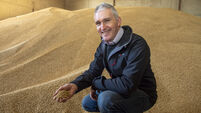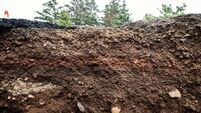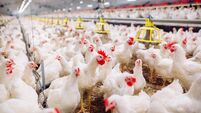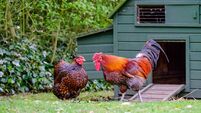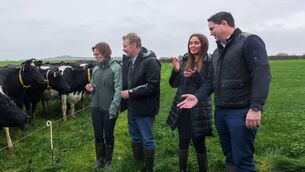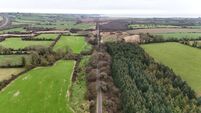Worm counts, weights, weather and a GPS hill farming trial keep Tomás busy
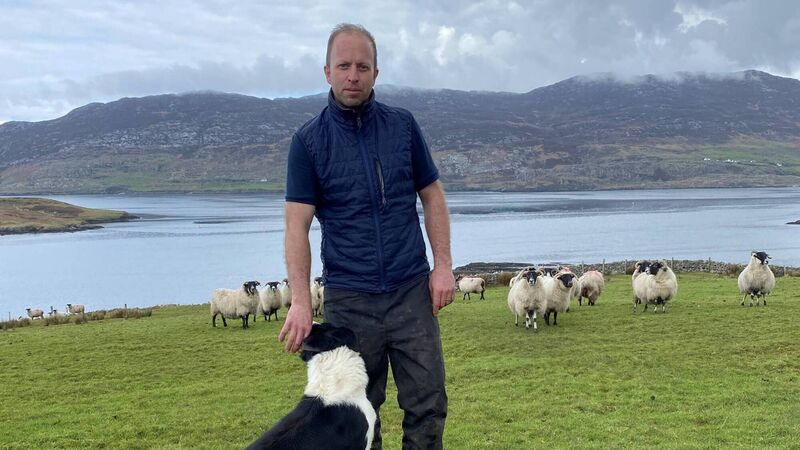
Tomás O'Toole: 'I hope to wean the lowland lambs at the end of June, and the hill lambs will be weaned later in July.'
The month of May was dry and sunny here in the west with high temperatures; it gave a great start to younger stock on the farm. It has been busy here on the farm over the past two months, with all lambing finished. There have been a few jobs on hand cleaning up the yard and sheds after lambing.
Lambs were given a nematodirus dose in early May (white drench), a mineral dose, and they were also given a pour-on to provide blowfly strike protection during the summer months. With the warm weather we had, and with potentially more warm weather during the summer months, it is important to have this preventative control done to protect lambs and ewes.
I also took dung samples from the hill and lowland lambs and sent these off to the lab. This will help me to find out the number of worm eggs present in the dung, which will tell me the level of worm burden in the flock. I’ll then be able to make a decision on whether treatment is needed — I should have these results shortly.
I hope to wean the lowland lambs at the end of June, and the hill lambs will be weaned later in July.
During May, the lowland lambs had their seven-week weights recorded. From this, it shows that for the singles, weights were at 23kg, twins 19.3kg, and triplets 18.5kg. This is an average daily gain from 0–7 weeks of 372g for singles, 303g for twins, and 298g for triplets. This is within the target range, and I am happy with the average daily gain for all litter sizes so far this year.
Most of the single hill ewes have now gone back to the hill area. I am currently involved in a research project in collaboration with Teagasc and SRUC (Scotland’s Rural College), who are using GPS technology to better understand hill sheep grazing patterns.
GPS collars have been fitted to the ewes, which then allows the researchers to track their movements and identify specific grazing zones on the hill.
The trial is being done on single ewes with lambs at foot at different age groups — four, eight, and 10 weeks post-lambing — and they then go to the hill in batches.
The ewes’ body condition and lamb weights were checked before the trial, and these will then be assessed when they finish the trial. It will give an indication of the ewes’ and lambs’ performance.
It will be interesting to see the results of this study when it’s completed.
I cut and baled silage within three days in the first week of May, which came to about seven bales/acre. I’ll have more first-cut silage in about a week’s time, weather permitting, and a batch of second-cut silage in the first week in July.
The second-cut silage ground got an allocation of slurry and protected urea. Later on in the year, I will take a sample from these bales to see what the quality and feed value is.
I will check for the dry matter content, protein, and energy value, which will help me make stock feeding decisions later on in the year.
I have also been busy off-farm with work involving the Connemara ponies on the farm. My daughter Keris-Mae, who is 12, takes a keen interest in show jumping.
She has qualified for the Clifden Show High Performance class and she is currently in the qualifiers for the Dublin Show Connemara Performance Hunter class.
Both of these shows will be taking place in August this year.
I will also be attending the Teagasc Sheep 2025 Open Day, which is taking place in Athenry on Saturday, June 21.
I will be taking part on the day in the Sheep Handling and Labour area, where we will be demonstrating the use of EID tag readers and other technologies to collect flock performance data.
I will share my experience of using these technologies on the farm during my time as a participant in the Teagasc BETTER Sheep Farm programme.
- Tomás O Toole, of Moyard, Clifden, Co Galway, runs suckler cows in combination with lowland and hill ewe flocks.


